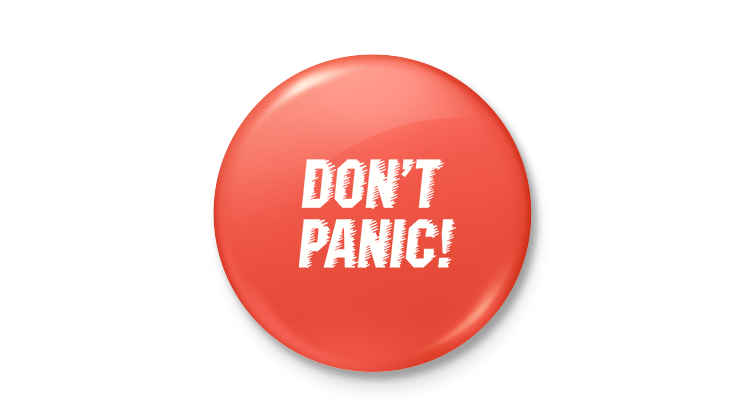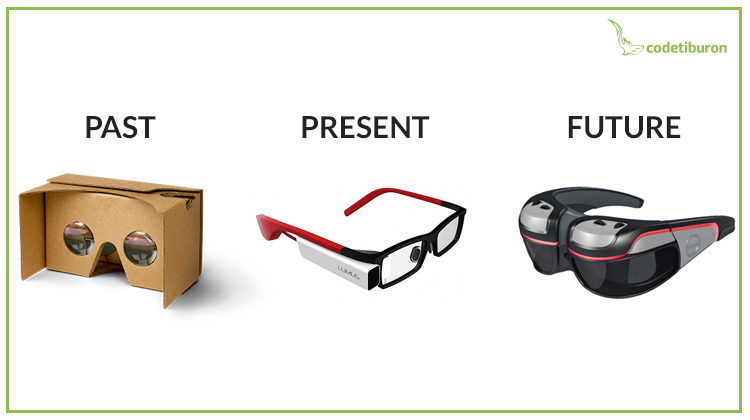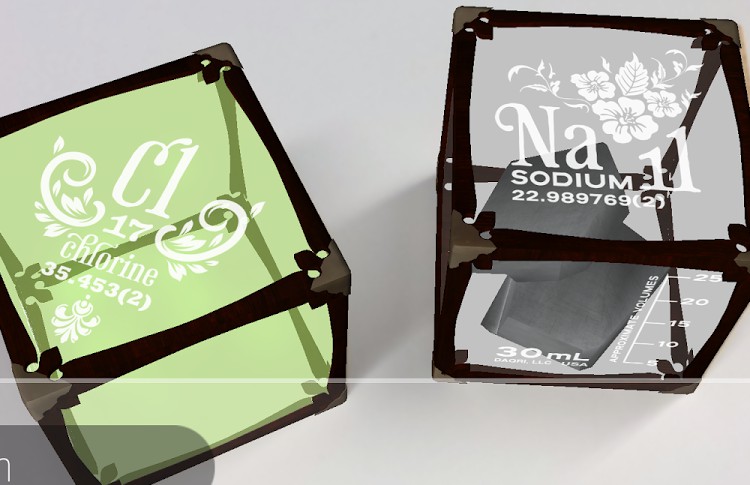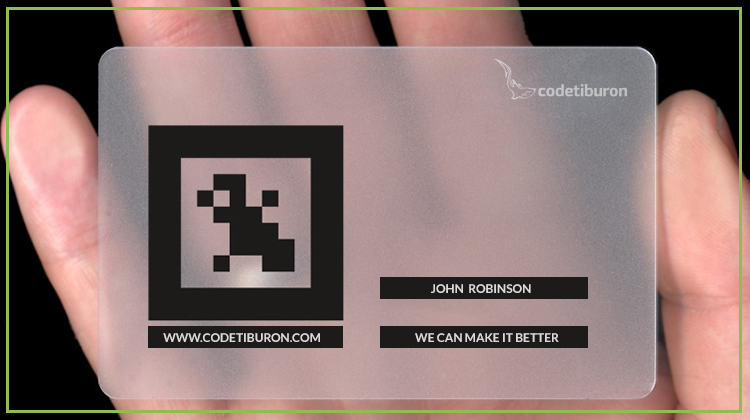Updated: August, 2018
Imagine how your life would be different if you had timely solutions at your fingertips. Let’s take a traveller’s experience, for instance. Your augmented reality app as your ultimate tour guide – no need for lengthy information search, preliminary bookings or planning your itinerary in advance. Just Go and live in the moment and follow your heart’s appeal. Remember your childhood sensations? The desire of adventure, the excitement of discovery, the magic of make-believe. You travel the streets and the place is no longer alien – it opens up and reveals every hidden nook, tells an enchanting story of every object at which you direct your smartphone’s camera. Sounds like a fairy-tale? Possible. But every artifact and event was once just an idea.
So, everyone’s talking about augmented reality, how important and beneficial it is for your business. The augmented revolution is here and your competitors have already been on it for quite a while. Feels like your business is missing out on something?
No worries!

In this post, we’ll explain augmented reality, unveil the past, present, and future of the technology, and even guide you through the process of creating your own AR business card. Here’s the essence of AR technology – right at your fingertips.
In this article…
- Why AR technology went viral
- How does augmented reality work
- A brief discourse into the history of augmented reality
- The present of AR apps: empowering businesses
- Unleashing the potential of augmented reality: new business opportunities
- How to create an AR application
- Best tools for building an augmented reality experience
- How to build an AR app without programming skills: tools for beginners
- Create an augmented reality business card: beginner’s guide
Why AR technology went viral
Despite the former scepticism about AR technology practical applications and the claim it’s yet another fad destined to be forgotten, what we observe now is gradual increase in its adoption throughout businesses. How can we justify mass adoption of AR apps? It’s attributed to three factors:
- meaningful content
- convincing and realistic interaction of the virtual and physical environment
- unique value that goes beyond what other technologies deliver
The popularity of AR technology is attributed to the fact that humans, as experiential creatures, enjoy novelty. We also love visual interaction. Both these traits are employed in creating an AR-based customer experience. AR can bring positive attention to a product, say researchers. One Researchgate study confirms people not only enjoy positive and interactive experiences, but are also willing to invest in a product that was promoted via this technology.
How does augmented reality work
Augmented reality is just a layer of artificial objects and extra information added to our tech-aided perception of the real world. It does not tear you off the real physical world, but enriches it by adding new layers of data to a smart device. In other words, augmented reality is virtual reality and the real world mixed together. But do not get confused, it is not identical with mixed reality. We formerly explained the difference between AR, VR, and MR. AR’s data is specific and relevant to what you do or where you are at this particular moment.
So how does it work? An AR-enabled device has software that recognizes a symbol, object, or image and adds relevant content so that we can see these layered visualizations as if they were real.
AR apps range widely – from a simple text-notification app to a complicated instruction on surgical procedure. They highlight important aspects, enhance understandings, and provide accessible and timely data.
Its primary goal – to deliver artificial objects into the real world – is realized by transferring projected images onto a pair of goggles, lenses, or camera view.
For example, Inkhunter, is a tattoo app that allows users to see how their future tattoo would look on their bodies. The concept is pretty simple, you draw a square line smiley face on a chosen body part and then position your camera view at the image, the app will replace the smile with a tattoo image.
A brief discourse into the history of augmented reality

You may be surprised that while we still consider AR technology a future-transforming innovation, it’s already accrued some legacy. Let’s take a moment to look back.
Attention-grabbing early efforts
The first-ever AR technology was created in 1968 by a father of computer graphics Ivan Sutherland. It was an AR head-mounted display system. From then on, AR advanced as wearables and digital displays. It could layout virtual elements on the real-world picture, for example, show geological information about a specific place.
The year 2008 saw commercial use of AR. A German agency developed an app for BMW Mini. To enable it, a customer directed a camera at a printed ad and the car model would come alive on the screen. A user could control the car on the screen and move it around to view at different angles, simply by manipulating the printed image.
Trying-on products at home
The early 2010s brought to the world AR that could interact with movements in the real world in real time. Since then a virtual try-on era has begun. At this point, AR’s instant face recognition revolutionized buying experience forever. Now you can try out anything from virtual making up your face to placing a couch inside your home.
The present of AR apps: empowering businesses
Augmented reality business opportunities are now available in many fields. A lot of companies are now involved in the technological process – from hardware manufacture to actual distribution. Just look at some of the current augmented reality business use cases.
AR-aided education
AR has changed the way educational content is produced and delivered. The benefits of augmented reality technology for education cannot be overestimated – it can revive the role of kids’ imagination in learning and development. See a couple of successful implementations below.
Google Sky Map is a free AR app that is used for educational purposes. This app makes learning astronomy interesting and fun. Students point their cameras at the sky and move them around in any direction – and the app will automatically identify constellations and stars.
Elements 4D is an AR educational app that was produced by DAQRI. This is one of my favorites. With this app, students can observe chemistry in action, all they need to do is combine different 3D boxes denoting chemical elements.

As a result, kids find out – the safe way – which elements combine and what happens if they do. The app requires printed-out and assembled square blocks which serve as trigger images for an AR experience. DAQRI’s website has special lesson plans for using Elements 4D with different age groups.
AR Dating Services
Dating apps, that’s how people find love today. Look at Tinder, it’s popular and most relevant in our society. Technologies crawled into people’s personal life already, and guess what? People love it. So, why don’t we give them what they want and add another technology to this equation? Augmented reality might be something that will make your dating app better than Tinder.
Want to create a dating app that beats Tinder? Check this post: How to Build a Dating App like Tinder… only Better
Sports Apps
When it comes to the sports industry, you can really make something useful for the people out there. For example, you can build an augmented reality app that will show a ball trajectory and speed right on the field or it can be a new convenient way for showing statistics.
Augmented Healthcare
Augmented reality in healthcare is a very powerful tool. It opens a lot of opportunities for training and performing procedures.
Anatomy 4D is a healthcare AR app by DAQRI.This app can take medical students inside a human body, heart and other organs. Students can explore the skeleton, muscles, and body systems at a higher level of interaction. This immersive experience of student interaction with learning material makes them more engaged and results in more in-depth and profound knowledge acquisition.

Landscaping
Landscaping is another field where augmented reality technology might come in handy. With AR, you can create any landscape virtually and see how it is going to look without the need to actually build something and redo if it doesn’t meet your expectations. Also, it allows making measurements without a tape-measure and can calculate the work cost. That’s an idea for a really useful app.
Maps and tourism
Tourism is an area where augmented reality can do great. AR can visualize the information on places people want to visit. Maps with augmented reality are what tourists have been waiting for. That kind of guide can provide a great user experience. But it’s not just about maps, museums can tell their visitors more about the objects and even bringing those to life.
Looking to create a travel app? Check our insights: How to Create a Hotel Booking App
AR in e-commerce & retail: reinventing customer experience
With the arrival of augmented reality in e-commerce, sales got yet another tool to influence consumer behavior. AR technology provides customers with the opportunity to try out things they want to buy, so they get more attached to the product. Moreover, e-commerce brands can draw attention to themselves by using this technology.
IKEA catalog is an AR app for retail. It allows you to see how the chosen furniture will look inside your home. You can place it the way you want and see if it fits in. With an app like that, your interior designer skills rocket. How gratifying it is to have a hands-on experience! And how can you deny yourself the pleasure of buying an item that looks so gorgeous in your interior?
Want more insights into AR ideas for small business? Check out the article Can Your Business Benefit from Virtual and Augmented Reality Technologies.
Teleconference apps
Teleconferences can become much more convenient. Augmented technology helps visualize everything from data to people, and it also lets users see everything from different angles.
With AR, teleconference on any field can become easier. Whether you are showing a prototype of a project or walking around the construction site.
Painting apps
Painting apps are about making walls a different color or coloring an elephant in a children’s book. The pool of possibilities is endless, and what you need to do is just pick a niche and figure out how you can implement AR, so it would be convenient and helpful for your users.
Marketing and advertising with AR
Most of the present-day AR techies are still trying to shake off the intimidating effect of the Pokemon Go app and figure out a winning strategy. However, a London-based startup Blippar has come up with a promising idea of implementing AR in ad banners. They engaged with several automotive brands in launching an AR ad campaign. Tapping on a mobile ad enables a user to observe the inside of a car; by allowing access to the smartphone camera, they can get a real-life windshield and window view of their surroundings. The most amazing thing is that it does not require apps, a simple tap on an ad banner would be enough for the user to engage in augmented reality.
The founders of the startup claim, the concept was born after sharing a joke in a pub about making a picture of the Queen on a £20 note come to life. Since, Blippar has created augmented-reality software behind ad campaigns for big brands including General Mills, Coca-Cola Company and Nestle.
Does the future look bright for marketing peeps? Check the post: Artificial Intelligence in Content Marketing: Can Bots Take over a Marketer’s Job?
Unleashing the potential of augmented reality: new business opportunities
AR potential is enormous. It’s just a matter of time and practice before businesses become completely augmented. You might be wondering, what’s the forecast for AR technology. We’ve decided to look into the crystal ball by examining the latest AR startups activity. Here are the trends:
- AR format of content. The technology has proven to be an engaging and popular way to deliver content. For example, Building Conversation is a tool designed to bring augmented reality applications to your business, projects or platforms to facilitate understanding and communication between different groups of people.
- AR takes over mobile. Even though goggles and AR glasses are not going anywhere, AR will focus on mobile. And that is totally logical. People do not adopt new technologies overnight, but smartphones have already become a commodity. For example, Asus partnered with Google to develop first ever smartphone with Tango and Daydream ZenFone AR.
- Industrial IoT. With the fast progress of Internet of Things a new need arised. Massive amount of data is being collected and analyzed. AR can provide users with a simple and interactive interface. For example, a smart tennis racquet, is part of IoT and the only access to its data is through the app. AR can help visualize data from the smart devices with the use of headsets and special glasses.
- 3D printing. Creating 3D models can become way easier with AR technology. For example, 3D Doodler is a pen that creates 3D content in augmented reality space.
For the full list of present-day startups in the area of VR/AR, visit CB insights’ blog.
How to create an AR application
Diving into a new technology may seem intimidating at first. But if you divide the knowledge into consumable chunks and take small regular steps, mastering a new skill comes easy. Here are a few things to consider with AR app creation.
- Figure out a great idea to enhance your business. Competitor analysis is a good way to handle it.
- Explore the market of existing SDKs and platforms for augmented reality development. Pick the one that fits your idea, budget, and expertise. For example, platforms like Vuforia, Wikitude, and ARToolKit require a profound knowledge of C++, Java, or C#. If programming languages are not your cup of tea, opt for an easier solution – tools like Blippar or Aurasma are an excellent choice for beginners.
- Remember that AR usually needs the presence of 3D objects. You can download existing models or learn how to make them yourself.
- Create a 2D tracker, which is a specific picture that gets placed on a surface and scanned by AR-aided devices.
- Create a unique design and prepare all the necessary 3D models, pictures, text files and data.
- Put all the elements together on a platform of your choice.
What’s next? Let’s evaluate some augmented reality tools you will need, their features and benefits, so you can make a better choice of a platform.
Best tools for building an augmented reality experience

When you try yourself as an augmented reality developer, choosing the right software development kit (SDK) is crucial. From a great variety of platforms for creating augmented reality, we have chosen three most highly recommended – Vuforia, Kudan AR, and Wikitude. Let’s explore their capabilities.
Vuforia
Vuforia is one of the most famous SDKs of today for AR development. So far it has powered 35000 apps.
- Supports platforms: Android, UWP, Unity Editor and iOS.
- Pricing: Free and commercial licences. The free version has limitations in cloud recognition and puts vuforia watermark on the end product.
- Programming languages: Provides API in C++, Java, Objective-C++ and .Net through an extension to the Unity game engine.
- Features available:
- real object, text, environments and image recognition
- target tracking
- mapping additional items with OpenGL
- scanning objects for recognition
- virtual buttons
- Capabilities: Includes support of virtual reality devices and a test app with comments showing Vuforia capabilities.
- Limitations: Lacks a complete framework manual. Instructions and short tips are given randomly, but they can’t replace the required documentation.
- Use cases: Rolls-Royce Trent 1000 Augmented Reality is an AR app that showcases the engine and its features in four augmented reality scenes. This is an example of a successful AR-aided product promotion. The app lets customers explore this new engine at a distance, as if they were actually nearby.
Kudan AR
Kudan AR is another popular SDK for augmented reality.
- Supports platforms: Android, iOS, Unity.
- Pricing: Free and commercial licences.
- Programming languages: C and C++.
- Features available:
- image recognition
- mapping additional elements on the base of user location and recognized images
- markerless tracking (instead of fiducial markers, it relies on the use of natural features like edges, corners, or textures)
- mapping additional elements via separate component over OpenGL
- Capabilities: Due to the unlimited number of recognizing images, it requires less storage space in a device.
- Limitations:
- insufficient development documentation
- no direct access to OpenGL
- Use cases: A retail AR app Sayduck allows users to see how the furniture they want to buy will look at their homes. The app visualizes a chosen item of furniture in 3D and places the furniture wherever you want in a user’s interior.
Wikitude
One more augmented reality SDK on our list is Wikitude.
- Supports platforms: Android, iOS, Smart Glasses, Epson moverio, Vuzix M-100, ODG R-7, PhoneGap, Titanium, Xamarin and Unity.
- Pricing: Free and commercial licences.
- Programming languages: Java and C++.
- Features available:
- 3D tracking technology (SLAM)
- image recognition and tracking
- geo-location AR for apps
- improved extended tracking (Wikitude SDK 6)
- advanced camera options (Wikitude SDK 6)
- positioning (Wikitude SDK 6)
- Capabilities: Free version is fully powered.
- Limitations: Free version comes with a watermark.
- Use cases: An example of a Wikitude-based app is a display mounted inside Rinspeed’s concept car. The concept of this app is quite interesting. A camera scans people walking past the car and the display shows what they are wearing and where they bought it from. This is how AR brings e-commerce to the next level.
How to build an AR app without programming skills: tools for beginners

Even if you are just starting in the field of programming, it’s not worth putting off augmented reality creation until you have mastered the art of coding. Knowing the right tools for beginners, you can get into building an augmented reality app without further ado.
In this part, we’ll tell about two of the best AR platforms for beginners.
Blippar
With Blippbuilder, no coding skills are required, not even for 3D objects or animations. This platform provides you with a drag-n-drop interface, which is easy as pie. Blippbuilder allows you to create your own interactive augmented reality experiences called ‘Blipps’.
Want to see some projects accomplished with Blippar?
Let’s explore an example of a travel solution. In 2016 Emirates famous airline introduced the world’s first interactive amenity kit in Economy Class. This unique kit includes not only necessary things for additional comfort in flight but also immersive content for mobile devices. Customers need to install the Blippar app and use it to scan the bags and they get access to entertainment and healthcare content.
Aurasma
Aurasma is a platform that allows users to create AR environment without any use of programming skills. Like most other platforms of this type, it includes a drag-n-drop interface and a cloud-based system. The content can be published and updated at the drop of a hat.
Just remember that platforms like Aurasma Studio, the simple ones, do not give you the whole package of opportunities, that you expect from professional SDKs. You cannot manipulate 3D objects the way you would in Vuforia or Wikitude. What are the limitations of Aurasma Studio?
- no face recognition, you can’t create face filters
- no mapping with OpenGL
- no scanning objects for recognition
- no mapping additional elements on the base of user location and recognized images
- no 3D tracking technology (SLAM)
- no geo-location
A popular magazine GQ has recently issued ‘the Men of the Year’ edition containing AR content. This way the reader had to download Aurasma-powered ‘GQ Live’ app and scan the magazine. This content featured sneak peeks of the issue and behind-the-scenes videos of the Men of the Year photo shoots. Also GQ included a big amount of augmented advertisements for companies like Geico, Hilton Hotels & Resorts, Louis Vuitton, Ralph Lauren, and Ray-Ban. So off-line marketing and advertising is all for AR technology.
Create an augmented reality business card: beginner’s guide

While you’re still unsure about your AR unique business application, why not follow suit and practice something universal and still allowing you to make a mark – an augmented reality business card. Your brand promise makes you stand out from the crowd and bring attention to your company. This is what you can make your company remembered. When you meet a new client, the first thing you do is hand him a business card. What if I tell you that even such a simple thing as a business card can become augmented? Whether you’re starting up in business or crossing the chasm to maturity, coming across as an innovative tech-savvy company is equally important. An augmented reality business card may be your next big thing.
What is an augmented reality business card
At first glance, it’s an ordinary card, but when you scan it with a smartphone or tablet, it opens up into a 3D product model. Wait! There is more. These business cards may include way more information and even product catalogs.
How to build an AR business card
Want to know the best part? Creating augmented reality experience with Aurasma studio is free.
- Create an account in Aurasma Studio.
- Select “Create New Aura”. Aura is an AR experience created via Aurasma Studio.
- Select a trigger image. A trigger is a printed-out or on-the-screen image that you use to view aura. For that, you just point your camera view onto a trigger and your smartphone screen will display AR elements. How to make a trigger image? You can upload a file from your computer or select a trigger already uploaded to your account.
- Select an image, give it a name, and then press “save”.
- Now you can edit your trigger. You can zoom in or out and add a mask (a geometrical shape that will strengthen a trigger image). Mask the areas that look not sharp or contrasting enough. Then hit “Next”.
- Now add overlays. Overlays are videos, links and images that launch from the selected trigger. Upload file from your computer or select the owne you already have in your account.
- Name your overlay and hit “Save”.
- Now you can edit your overlay, place and resize it the way you want. Hit “Next”.
- Give your Aura a name and save it.
- To view your first AR experience download Aurasma app, log in to your account and point your camera to the screen or printed trigger. Enjoy your AR experience!
Conclusion
Augmented reality apps are becoming widely used and accessible nowadays. Don’t be the last to reap the benefit. Creating an AR app is no arcane art. And we’ve proven, everyone can cope – from beginners to professionals. What’s your next step? Set your imagination free and envision how augmented reality technology can empower your business.
How much does it cost to build an AR app with CodeTiburon?


This doesn’t make sense because app doesn’t do what this article says it does. I don’t know if it’s my phone, the app, or if it’s just a bug… but it doesn’t work. VERY disappointing considering it came from HP. *eyeroll**
Josh Liston, thanks for your feedback! We’ve adjusted the focus. Now if you use the HP app on the card’s QR code, you’ll get the magic 🙂 All the best!
You can also use Reality Composer (free app from Apple) to create an Augmented Reality business card without code. There is a step-by-step tutorial at https://medium.com/augmentop/how-to-create-an-interactive-ar-business-card-without-writing-code-21cc669f94fc
My parents are planning to start their architecture business, and I always like to give them ideas about their in-process projects so I wanted to investigate how augmented reality could help them. I love that you said AR could contribute to teleconferences to whether showing a prototype of a project or walking around the construction site. I will start looking for an AR app developer to be able to formulate this business base for them and execute the idea.
Thank you for your thoughtful comment, Megan Alder! If there is something we can do to help, give us a call.
In This article aims to cover each and every aspect of augmented reality and how it is being used to revolutionize the way people use to run their business.
I think that this works out.